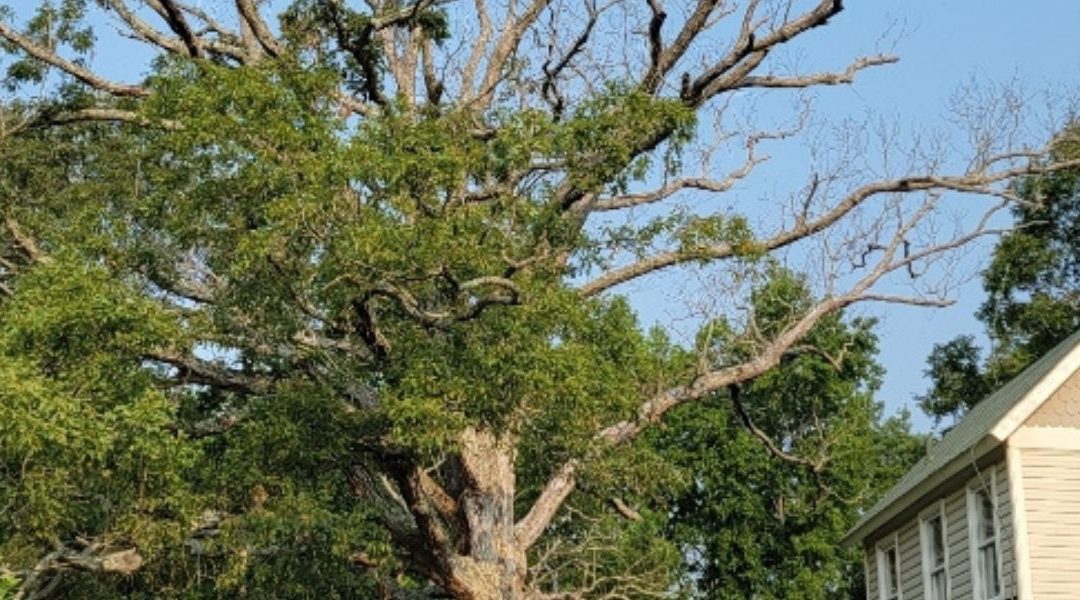Sometimes, the vines that choke out trees can cause an entire tree to fall over or die off. Vines also cause significant structural damage, wrapping around trunks and branches for endless problems.
If you want healthy, well-maintained trees, vines must go. The easiest way is to engage with professionals like Hernandez Complete Tree Service LLC, Waldorf’s reliable tree service company.
Below, the team describes what you need to know about these vines and how to handle them.
Types of Vines That Could Choke Out Trees
Learning to recognize potentially harmful vines is a great first step. If you notice these types of vines on or near your trees, you might want to call a certified arborist for assistance.
Poisonous or Invasive Vines
Air potato (Dioscorea bulbifera)
This vine species originated in Asia and came to North America as an ornamental plant. It is now an invasive plant in many states. It has waxy leaves that grow up to 10 feet long and produce tubers weighing up to 10 pounds each!
Poison ivy (Toxicodendron radicans)
Poison ivy can grow up to 15 feet tall and remains notorious for the itchy patches on any skin it touches. It has three-lobed leaves with white or green hues. It grows in temperate regions, including North America and Europe.
Wisteria (Wisteria)
Wisteria’s fragrant flowers are white, purple, blue, and sometimes pink, but these are invasive plants. However, this deciduous, woody vine is one of the most aggressive vines growing in U.S. Department of Agriculture Plant Hardiness Zones 5 through 9.
Wisteria is an invasive species with vines that choke out trees and overtake other plants if not trimmed regularly.
Aggressive vines
Earleaf greenbrier (Smilax rotundifolia)
These native plants grow in the southeastern United States. The vine is famous for its large thorns and dense mats that crowd out other plants. If left unchecked, these vines can grow up to 25 feet tall.
Yellow jessamine (Gelsemium sempervirens)
This vine is native to the southeastern United States. It produces small white flowers in the spring. However, Yellow Jessamine also proliferates, reaching 30 feet as a common choice as a fence or wall covering.
The vine chokes out young and mature trees. So, consider using a climbing rose instead if you’re looking for an ornamental alternative.
English ivy (Hedera helix)
English ivy is another aggressive vine that can choke out beautiful trees if given a chance to thrive. It is a hardy, evergreen plant that can grow to more than 30 feet long in many climates. Its leaves are typically dark green and shiny, with three lobes.
With small white flowers appearing in the spring, English ivy tends to grow on the following:
- Trees
- Other plants
- Walls
- Fences
- Roofs and more
Why Stop Vines From Growing on Trees?
Vines growing on trees can be detrimental to both the tree and the ecosystem it supports. Property owners should not allow vines to take over. Vines bring the following most common problems:
- Destabilize the tree or push it over
- Do untold damage to surrounding buildings or people underneath them
- Prevent sunlight from reaching tree leaves, which stops photosynthesis
- Strip bark, damaging the tree’s inner workings and killing it
Consult a Local Arborist About Tree Care
Have you noticed vines around the property? Hernandez Complete Tree Service LLC offers a wide range of tree care services, including tree pruning, tree and vine removal, trimming, and shaping. We can also advise how to keep your trees healthy and strong and provide adequate care to a sick tree.
Call Hernandez Complete Tree Service LLC at 240-299-4639 today for more tips on handling vines that choke out trees or anything else your landscaping needs to thrive.


